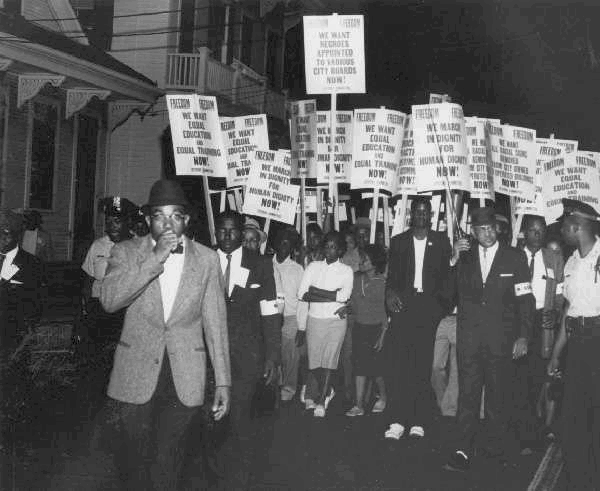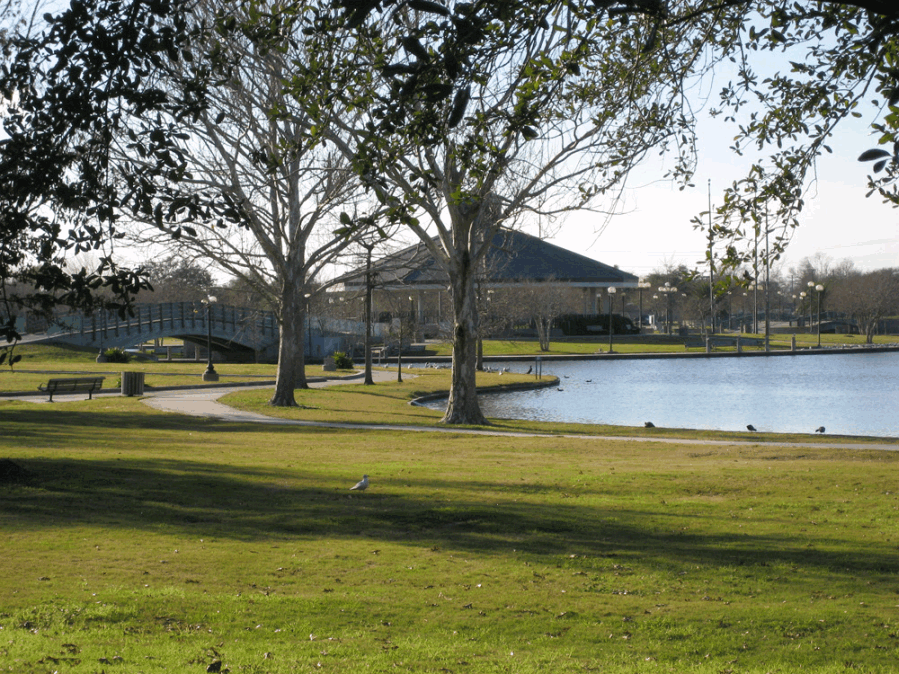|
Today in New Orleans History |
|
|
September 30


 To receive an update for each day in New Orleans history,
join our facebook page - Today in New
Orleans History.
Protest March Photo and text from the New Orleans Public
Library On September 30, 1963 more than 10,000 black New Orleanians, along with 300
white citizens, marched from Shakspeare Park to City Hall to protest the failure of city leaders to act against discrimination
in the Crescent City. The gentleman third from the right, holding a sign, is Revius Ortique, a future Associate Justice of
the Louisiana Supreme Court. [Thanks to Terrence Butler, Sr. for helping with the identification.]  To receive an update for each day in New Orleans
history, join our facebook page
- Today in New Orleans History
Civil engineer Benjamin Henry Latrobe II, born on December 19, 1806, was the son of Benjamin Latrobe, architect of the United States Capitol and the Basilica of the Assumption. Around 1820, he worked with his father to establish a water supply for New Orleans. He died in New Orleans, aged 56, on September 30, 1820.
According to the book A History of Louisiana (1909): It was found that there was no hangman in the colony, so the condemned prisoners were ordered to
be shot. When the day of execution came, hundreds of people left the city. Those who could not leave went into their houses,
closed the doors and windows and waited in an agony of sickening dread to hear the fatal shots. Only the tramping of soldiers
broke the deathlike stillness which brooded over the crushed and helpless city. At three o’clock on a perfect October
afternoon in 1769, the condemned men were led to the Spanish barracks. Lafreniere, it is said, gave the order to fire. A
volley of muskets broke out on the still air, and five patriots went to their death, — the first Louisianians to give
their blood for the cause of freedom. A brief history of the LaFreniere property: The 5000 acre land grant known as Elmwood Plantation was received from Bienville as
a reward for Nicolas Chauvin de la Freniere's service to the colonization of New Orleans. At his death the land passed
to his son, Nicolas de la Freniere, fils [the son]. 427 acres were used for
the multi-million dollar pari-mutual Magnolia Park Inc. Harness Racing
course which opened in 1954 on
Frank J. Clancy Boulevard (now Downs Boulevard). The company built a $100,000 road (David Drive?)
from Airline Highway to the track where there was parking for 5000
vehicles, seating for 2500 in the grandstand (the dining area seated 600) and
accommodations for over 20,000 people on the grounds. Barns provided spaces for 600 horses on the 227
acre track. The remaining 200 acres was later used for housing development.
The harness racing season ran from September to Thanksgiving Day (when the
New Orleans Fairgrounds opened each year). In 1959 the track was renamed
Jefferson Downs which offered nighttime horse racing. It closed in
1965. Lafreniere Park groundbreaking was celebrated in 1977 -- the park was dedicated
and opened in 1982. Photo by Megastealer |
|
|

To receive an update for each day in New Orleans history,
join our facebook page - Today in New
Orleans History.
Analytics |



